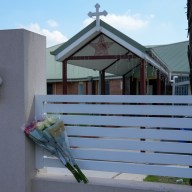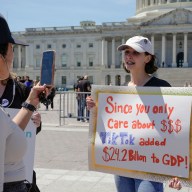
Gone are the days when models, like Victorian children, were seen and not heard. Nowadays their social media following through Twitter and Instagram can be as fiscally valuable as their face and figure.
Sarah Doukas, founder of agency Storm Models, explains that “there are girls who have huge followings, so we have to monetize that with a client. We’ve had to teach them because they would come to us and say ‘it’s an advertising job.’ We would say ‘what do you mean advertising? Is it e-commerce?’ They would hide under the table and it wouldn’t mean anything to them but now it should be monetized in a big way. It’s a big element.”
Cara Delevingne’s flock of Twitter followers numbers almost two million, while her Instagram account is just shy of seven million. The 22-year-old’s audience reach rivals that of the big brands such as Burberry, Pepe Jeans and Mulberry for whom she models and subsequently markets for, thanks to her candid behind-the-scenes social media sharing.
“I remember being horrified a couple of years ago when she was in Paris and watching on our computers as Cara was mobbed outside a show by the general public and not by the paparazzi. And I was like God Almighty this is extraordinary, this cannot be happening,” exclaims Doukas from her glass-walled office.
Inevitably, Delevingne’s clickable antics in entering into the public interest – or rather the interest of the public –creates a ready stream of gossip-fueled picture stories of bleary-eyed partying or even a snap of the starlet sinking her teeth into model and bestie Jourdan Dunn’s butt at the recent GQ Awards.
But Delevingne, who not only survived tabloid accusations of dropping a cocaine baggie outside her London home last year, is in even greater demand with her ineffable mix of disarming charisma and zany ADHD childishness. It’s her USP (unique selling point). “When she was four-years-old, she was always an unbelievable mile a minute jumping bean. I said ‘she will never be tall enough’ but I did always think she would act,” reminisces Doukas. Of course, she was right.
Then again, the maker of industry greats has a knack for spotting a marketable quirk. She spotted a 14-year-old Kate Moss in New York’s JFK Airport in 1988, who at only 170cm (short by industry standards) might have been overlooked by a stickler for runway uniformity. It’s a calculated gamble that saw Australian model Andrej Pejic — now known as Andreja after sexual reassignment surgery — added to the women’s and Storm artists boards. “From the minute I saw Andrej (as she was then) I embraced him as a person because not only was he tremendously beautiful looking but she is also tremendously bright – she is extraordinary,” states the scout. Pejic has since closed the Jean Paul Gaultier show and walked for designers such as Christian Dior and Marc Jacobs, with plans to move into the acting world.
However, Doukas, who set up the agency in 1987, chides the industry for its lack of inclusivity in terms of race and gender diversity. “I just don’t think we have enough diversity.” Designers are still reluctant to move away from the Caucasian aesthetic that dominates the runways, although the fashion month cities (New York, London, Milan and Paris) are starting to cast more Asian models. “It’s what they think will sell,” remarks Doukas.
It’s the simple fact that the industry comes down to sales that empowers the public both as consumers of fashion and social media to drive the change away from runway and high street homogeneity. Doukas believes that “when you get back to the power of social media and if someone like Andreja Pejic can become a voice with all these followers, then brands will be forced to embrace her or whoever.”
















